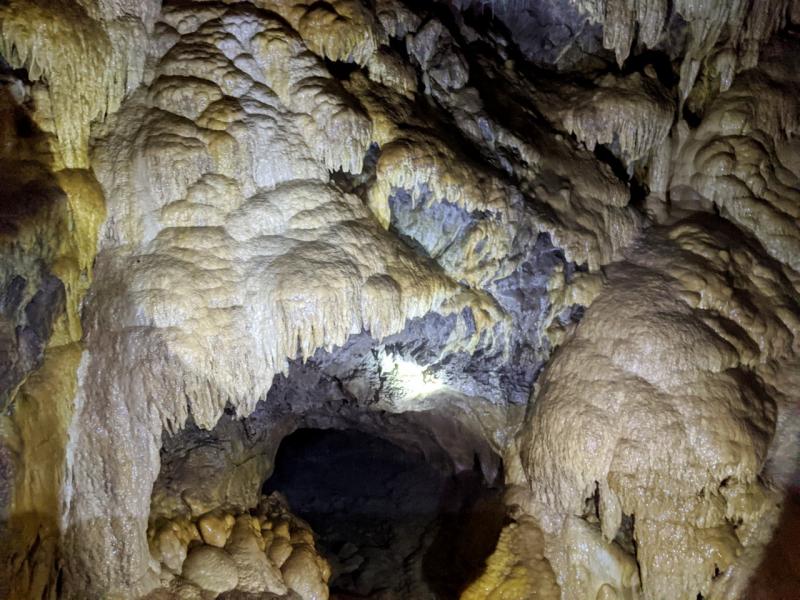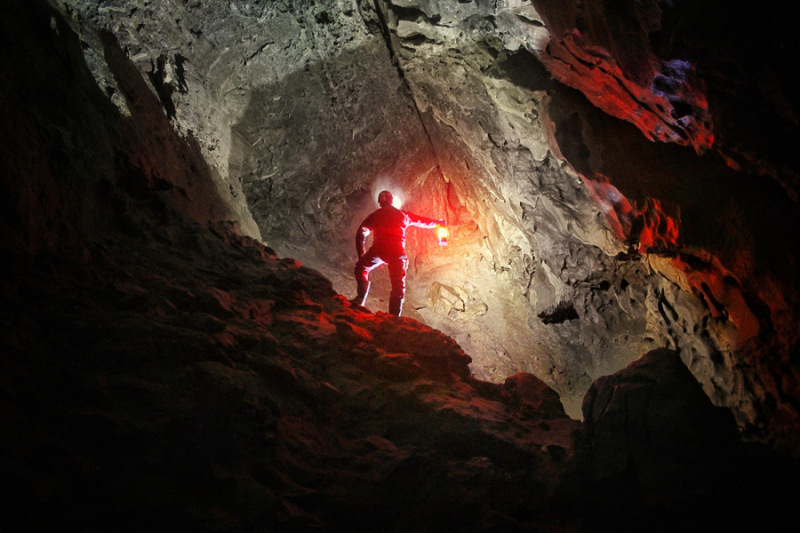Rat's Nest Cave

Rat's Nest Cave is about six kilometers east of Canmore, on the south-facing slope of Grotto Mountain. More than four kilometers of tunnels and a variety of geological and paleontological features, including stalactites, stalagmites, and animal bones deposits, may be found in the subterranean site. The cave is one of the largest caves in Canada that is worthy to explore.
Rat's Nest Cave's heritage significance stems from its unique geological structures and extensive paleontological collection. Rat's Nest Cave was formed by the dissolution of limestone from the Livingstone and Mount Head formations some 350 million years ago, near the end of the Devonian period. During the Late Cretaceous Period, around 85 million years ago, the Front Ranges of the Rocky Mountains began to develop from these formations. Massive pressures squeezed, thrust, folded, and cracked the mountains' granite, forming faults and fissures that eventually became underground rivers of groundwater serving a large subsurface drainage system. One of these streams was the Rat's Nest Cave. As water enlarged the breach in the limestone, the cave's volume grew larger over time.
The Bow Glacier's multiple advances and retreats throughout the late Quaternary epoch, 120-12,000 years ago, changed the alpine environment even more. Massive volumes of water poured into Rat's Nest Cave during glacial retreats, widening tunnels and giving the cave its peculiar geological structure. The Bow Glacier retreated around 12-13,000 years ago, and the tunnels of Rat's Nest Cave slowly drained of water in its wake. The cave's drying allowed travertine formations to form as a result of the interaction of meteoric fluids with calcium carbonate, the major ingredient of limestone. Rat's Nest Cave has been imbued with a particular kind of beauty thanks to its outstanding and varied travertine formations.
The place became home to a diverse range of animal species after Rat's Nest Cave was drained. The cave has uncovered the skeletons of hundreds of species, including paleontological specimens of birds, snakes, fish, and various amphibians. Over 30 animal species' remains have been discovered in the cave. The cave's numerous and diverse paleontological treasures coexist with the site's current richness of insects, arachnids, and worms. The presence of humans in the cave has been confirmed by the discovery of archaic implements dating from around 3000 years ago.
Depth: 245m
Length: 4,003m
Location: beneath Grotto Mountain near Exshaw.







